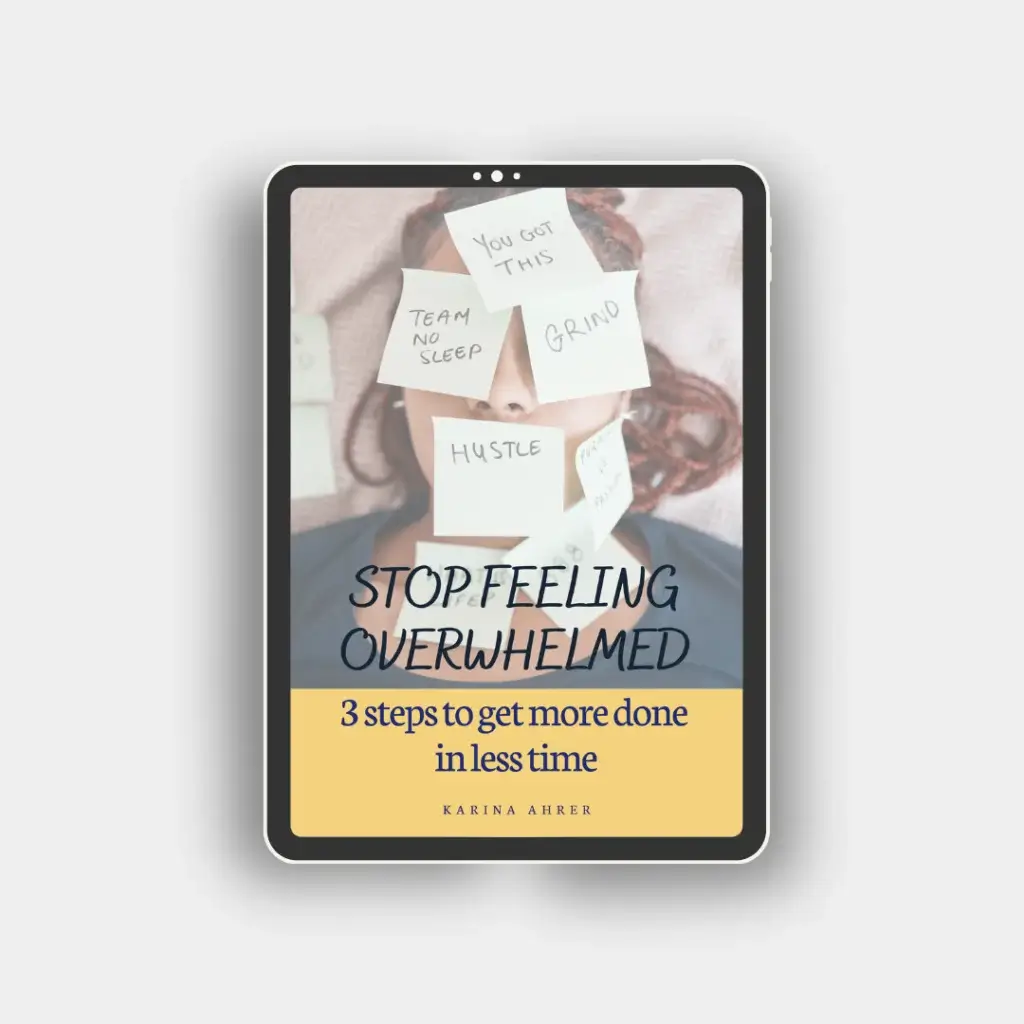To enjoy more of your student life
As the students return to campus for another year of learning and growing, I want to tell you about a popular time management tool to learn more efficiently.
The Eisenhower Matrix is one of my favorite time management tools because it’s easy to use and understand and can make a big difference.
The semester is only a few weeks long, and it’s usually filled with an overwhelming amount of texts, learning materials, theories, and skills to learn.
The Eisenhower Matrix is a tool to help you figure out the priorities of each exam, lecture, or project. It’s helping you to focus on the most important things.
Focus
Every lecturer says his subject is the most important one. Every book and every sentence in their lecture is important.
But usually it isn’t.
The 80/20 principle states there is inequality in the world, and you can apply it here too.
20% of the learning materials of a lecture are important for a grade of around 80%.
This is why you can scream out loud: Scr*w perfectionism!
Instead, only focus on the important 20%!
For you, trying to fit all exams and projects into a project and making good grades, you need to focus on the important stuff.
- Let go of listening to 100% of what the professor says.
- Let go of perfectionism.
- Let go of knowing everything.
I’m not against being obsessed with a topic and wanting to learn everything about it. And I completely support studying everything about your passion.
But most of the lectures aren’t your passion, but you need to pass them to work in this field.
This story is about learning faster and more efficiently to do more exams and projects. There’s limited time every semester. And I want you to enjoy your student life too!
So let’s get to the tool of this story:
The Eisenhower Matrix

In the picture, you can see the 4 parts of the matrix. The goal is to use this tool to decide what is important to study and what isn’t.
It’s about finding the important 20%.
I’ve been using this matrix for a few years on every exam and project. I listen to the professors and tutors to figure out what is important.
In the end, I decide on what I learn, what I just read through once, and tasks I can delegate or let go of.
Start with writing down all the tasks or topics you need to study.
If you work in a group, write them on Post-its, and then you can sort them for the matrix on a clipboard for everyone to see.
If you are just doing it for yourself, you could just write them in a notes app or Word file.
Based on your experiences, researching old exams, and listening to your tutors, sort your tasks into the 4 parts of the matrix:
- Urgent and important
- Urgent and not important
- Not urgent and important
- Not urgent and not important
For example, a lecturer talks about a topic non-stop or always comes back to one theory: it’s important.
As an architecture student, I do projects and get weekly feedback: I listen to the feedback (and talk with others) and then decide what’s important to do for the upcoming week. If we talked about finalizing the structure of the building, it’s important and urgent (as I need it to move forward to other tasks). This means making my plans pretty for the final presentation is not urgent and not important at the moment.
Tasks can change their importance and urgency throughout the weeks of the semester.
I prefer planning in weeks, so my tasks in the matrix are what I need to do now.
As you can see, the image states what to do with each part of the matrix.
- Urgent and important: Do!
- Not urgent and important: Decide!
- Urgent and not important: Delegate!
- Not urgent and not important: Delete!
Here are some examples:
- The telephone rings: urgent and maybe important
- Studying for the exam next week: urgent and important (if it’s a lot to study and part of the grade)
- Reviewing the lecture notes weekly: not urgent and important
- Questions from your teammate about some tasks that are not important at the moment: urgent and not important.
Write them back to decide for themselves or do them if they want to do it, but you don’t need to do it now! - Reading every literature of every lecture: not urgent and not important!
Usually, you don’t need to read every book to pass the exam. If you are interested in the topic, you can read the book during your holidays.
If you struggle to sort the tasks, you can ask your colleagues or teammates what they think is important.
Conclusion
The Eisenhower matrix helps you figure out what to prioritize and focus on right now.
I especially love to use it with a team to set goals and figure out together what is important to achieve them. After discussing the 4 quadrants of the matrix and sorting the tasks, everyone knows what to focus on right now.
It helps everyone to have an overview and a feeling of what is important and to make their own decisions later.
The Eisenhower matrix is an important time management tool to help students with the overwhelming amount of information every semester.
With every exam, you will get better at analyzing what is important and what isn’t.
At the end of my studies, I didn’t need to write down the tasks and sort them anymore; I did it unconsciously.
With a little help at the start with the image, you can do it too!
Less Stress. More Time. Less Overwhelmed!
Get your free copy of my 3 steps!

Get daily insights, motivation, and inspiration:
If you are as addicted as I am to reading books, check out my favorite books!




